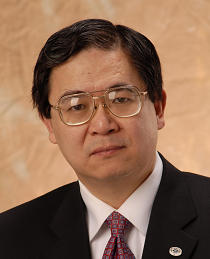
KEYNOTE Speakers

Prof. Gordon Huang
Faculty of Engineering and Applied Science, University of Regina, Canada
Dr. Gordon Huang is a Tier 1 Canada Research Chair in Energy and Environment, and Executive Director of the Institute for Energy, Environment and Sustainable Communities at the University of Regina, Canada. He holds BSC from Peking University (China), MSc from Simon Fraser University (Canada) and PhD from McMaster University (Canada). Since the 1990s, Huang has led over 150 research projects, produced over 800 peer-refereed international journal papers (with an SCI-based H-index of 51 in Science Citation Index under Thomson Reuters' Web of Science), and supervised over 100 Master/PhD students (with degrees awarded). Over 20 Huang's PhD graduates were appointed as faculty members at universities in Canada, USA, China and Singapore. He is a Fellow of the Canadian Academy of Engineering, and the President of the International Society for Environmental Information Sciences. He also acts as editor-in-chief for Journal of Environmental Informatics (http://www.iseis.org/JEI/), and served the United Nations Development Programme as Chief Scientist for a program of Rural Water Resources Management and Drinking Water Safety. His pioneering work in environmental risk management has been recognized as a significant innovation, and has influenced government and business approaches for tackling environmental challenges and formulating related policies.

Prof. Yongping Li
Beijing Normal University, China
Yongping Li is a Changjiang Scholar Professor at Beijing Normal University, China. She receives her MSc and PhD Degrees from the University of Regina, Canada. Her research interests involve in energy and environmental systems analysis, environmental pollution control, and decision making under uncertainty. Dr. Li has led or involved in over 60 energy- and environment-related research projects supported by industrial, governmental and international organizations. She has produced more than 400 peer-refereed international journal papers (with a SCI-based H-index of 50). She has been continuously selected as a highly cited scholar in the field of “Environmental Science” (by Elsevier) since 2013. She supervised over 70 Master/PhD students. Dr. Li was received a number of awards such as Distinguished Young Scientist Award, New Century Excellent Talents in University, the National Natural Science Funds for Distinguished Young Scholar, the National Award for Youth in Science and Technology, and the National Award for Youth Female Scientist.


